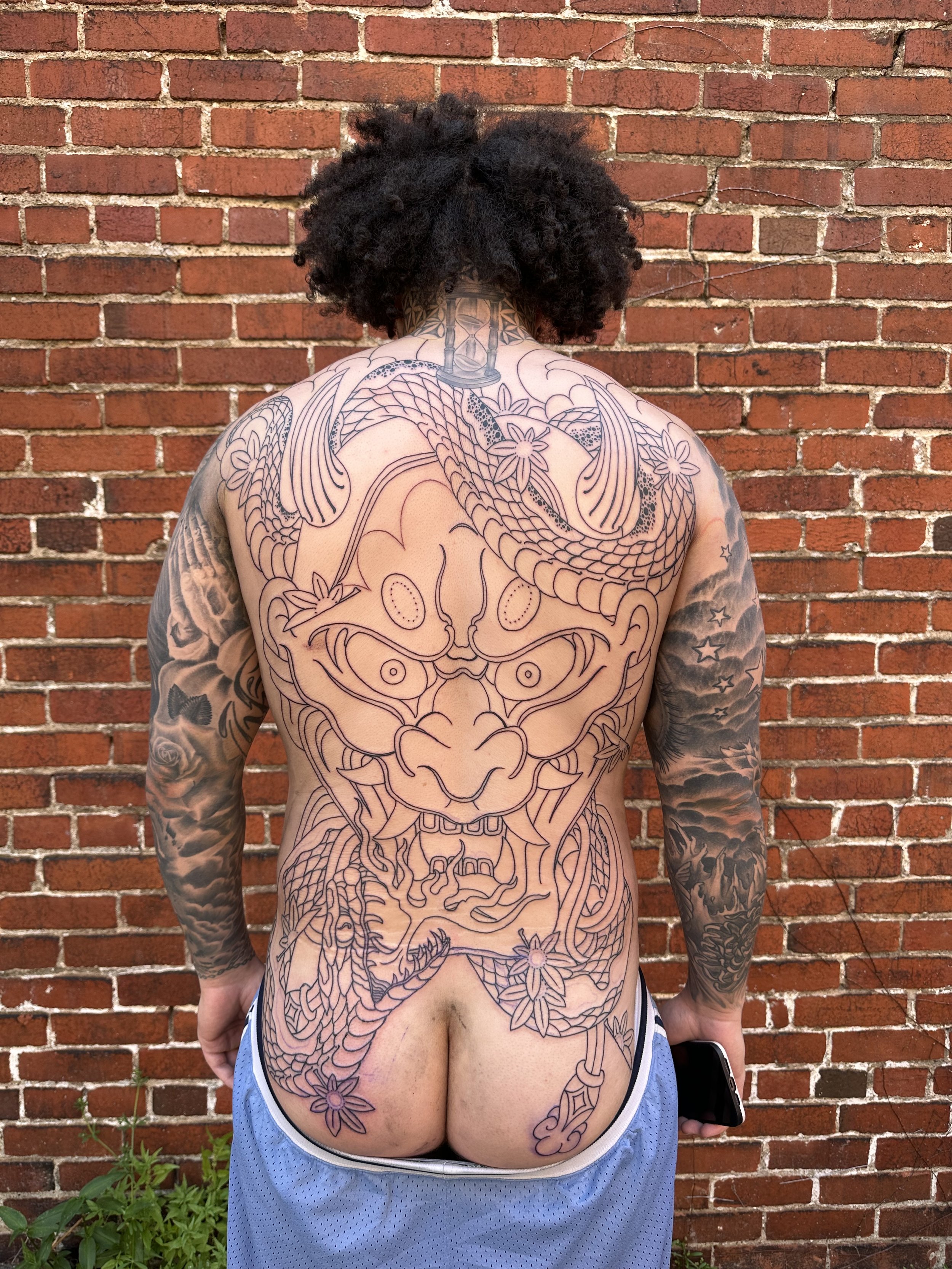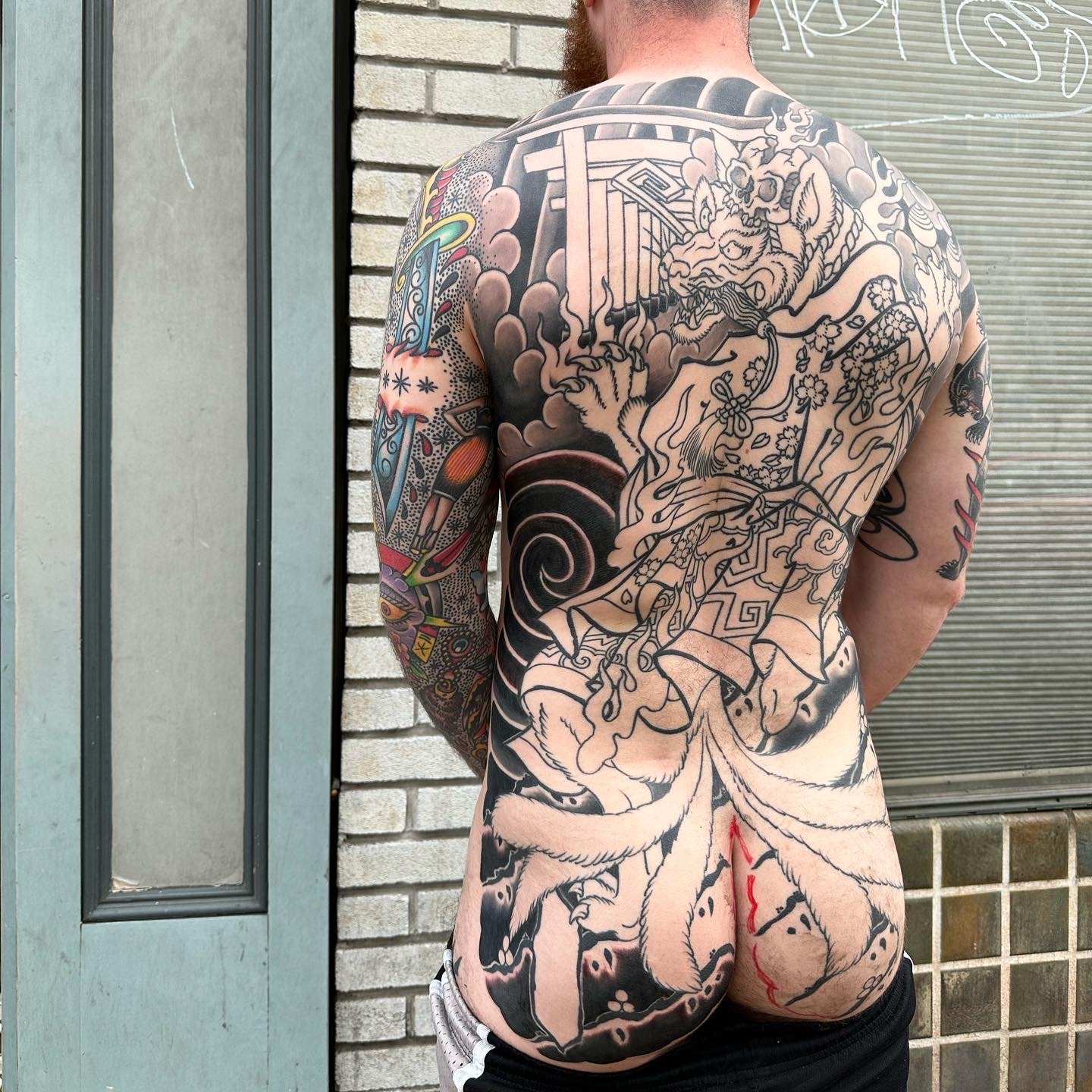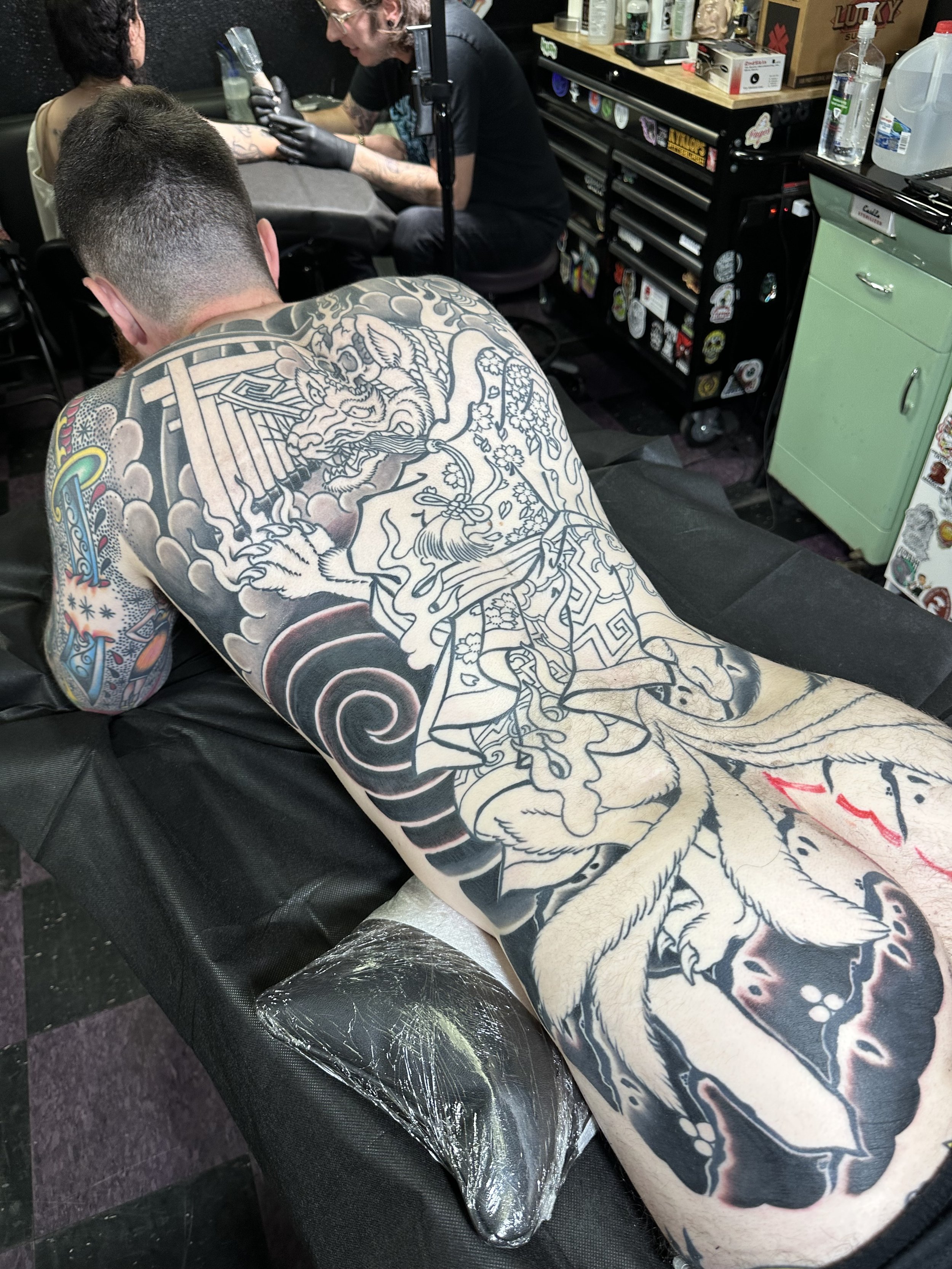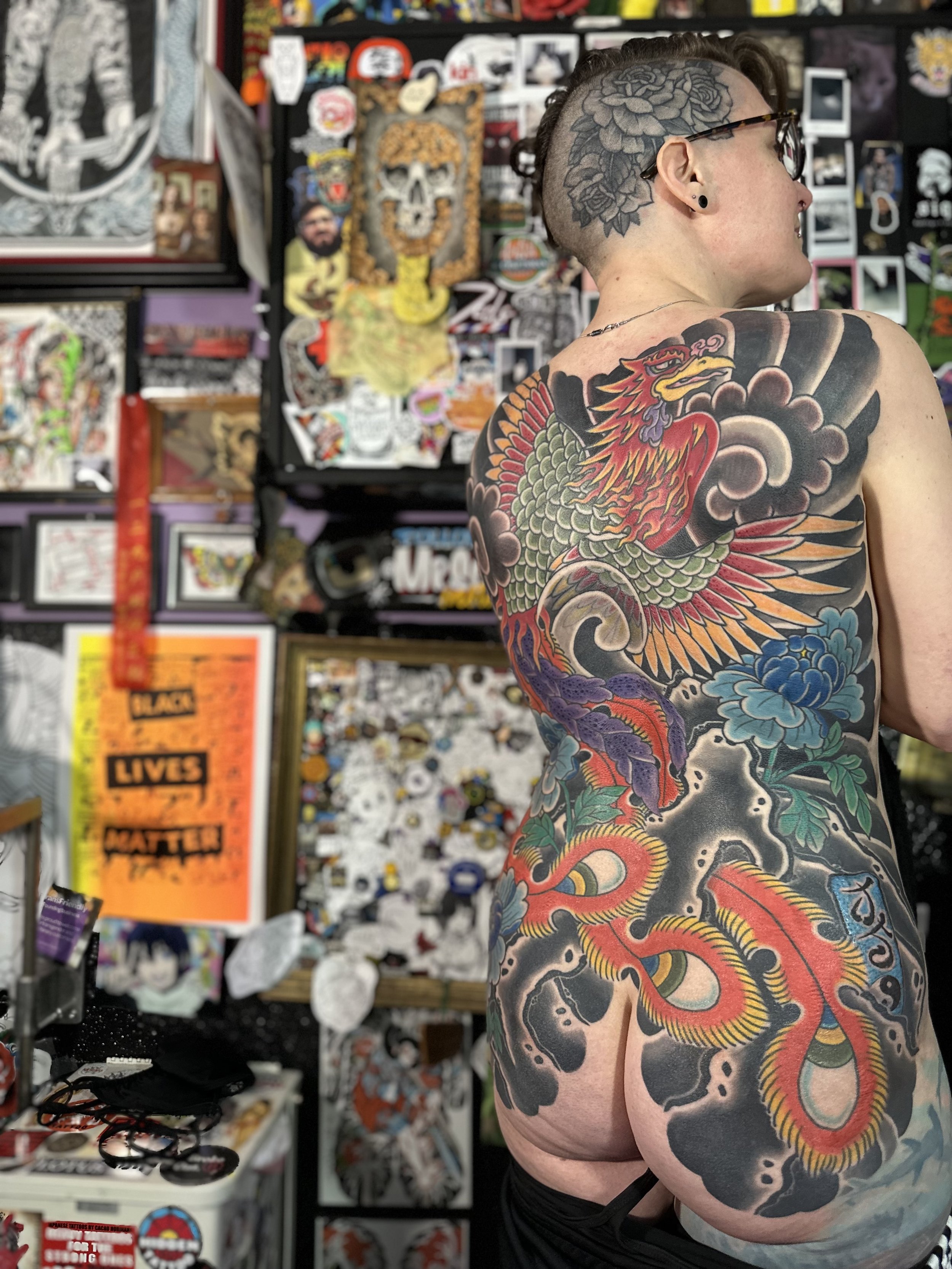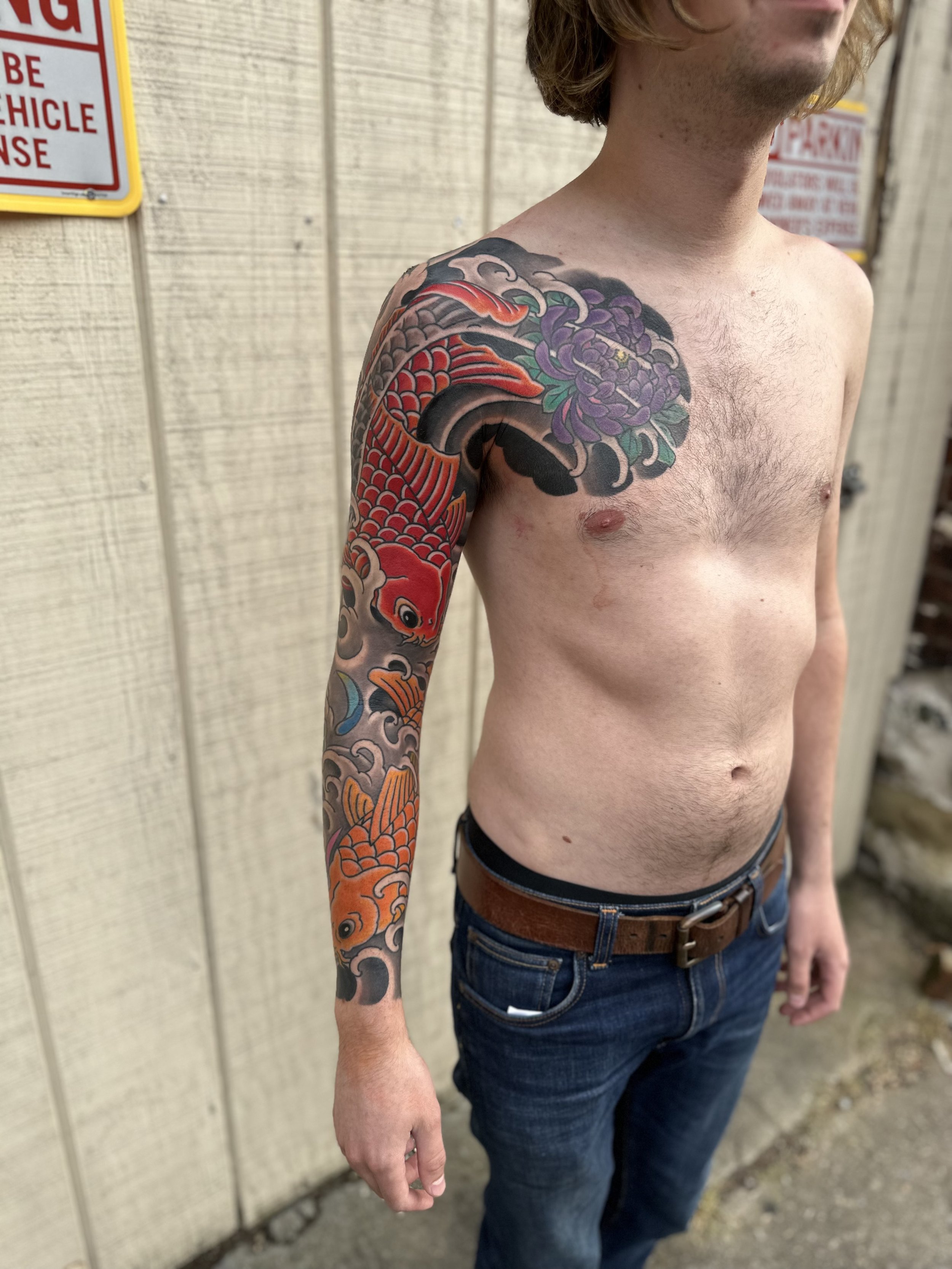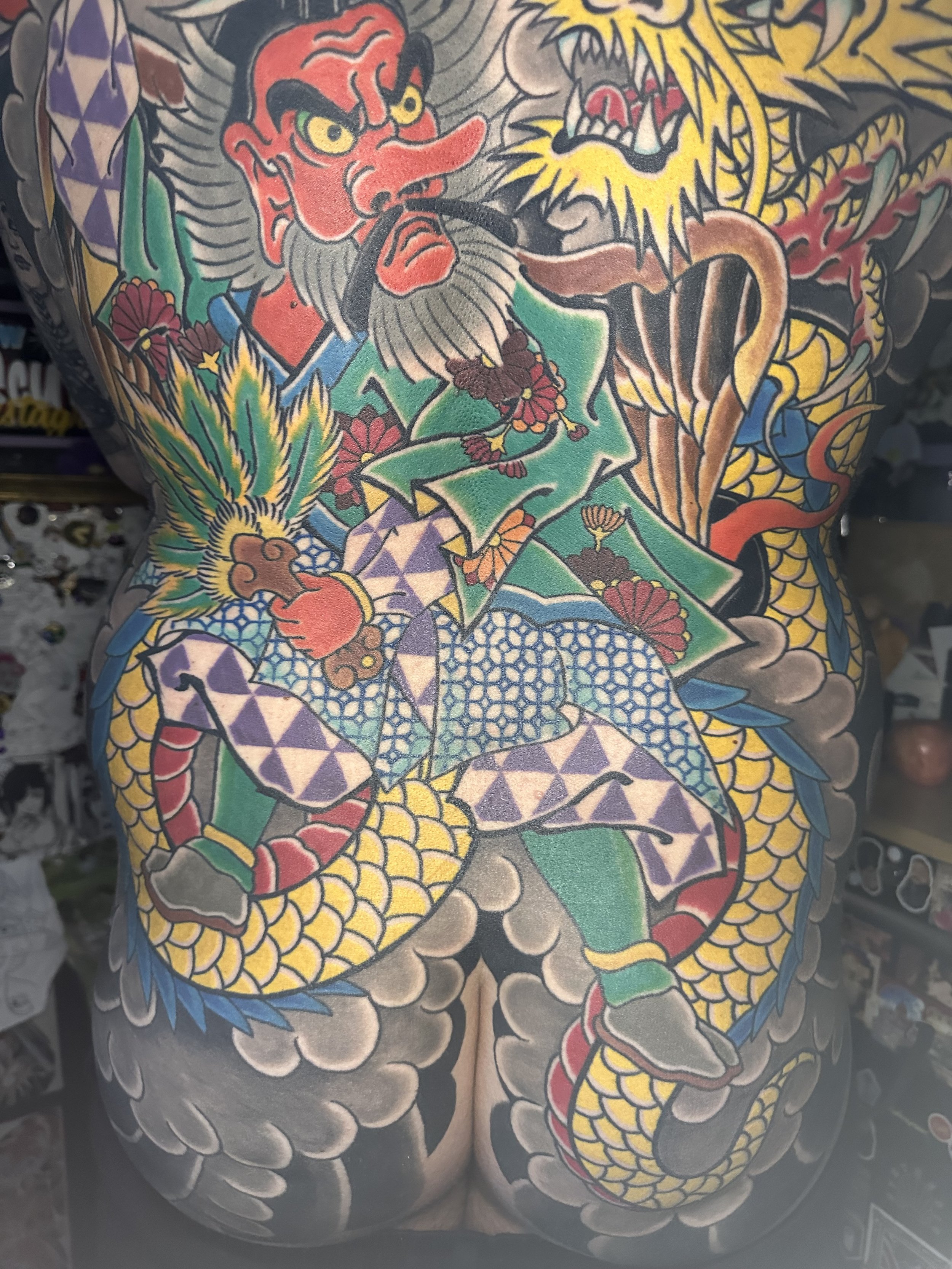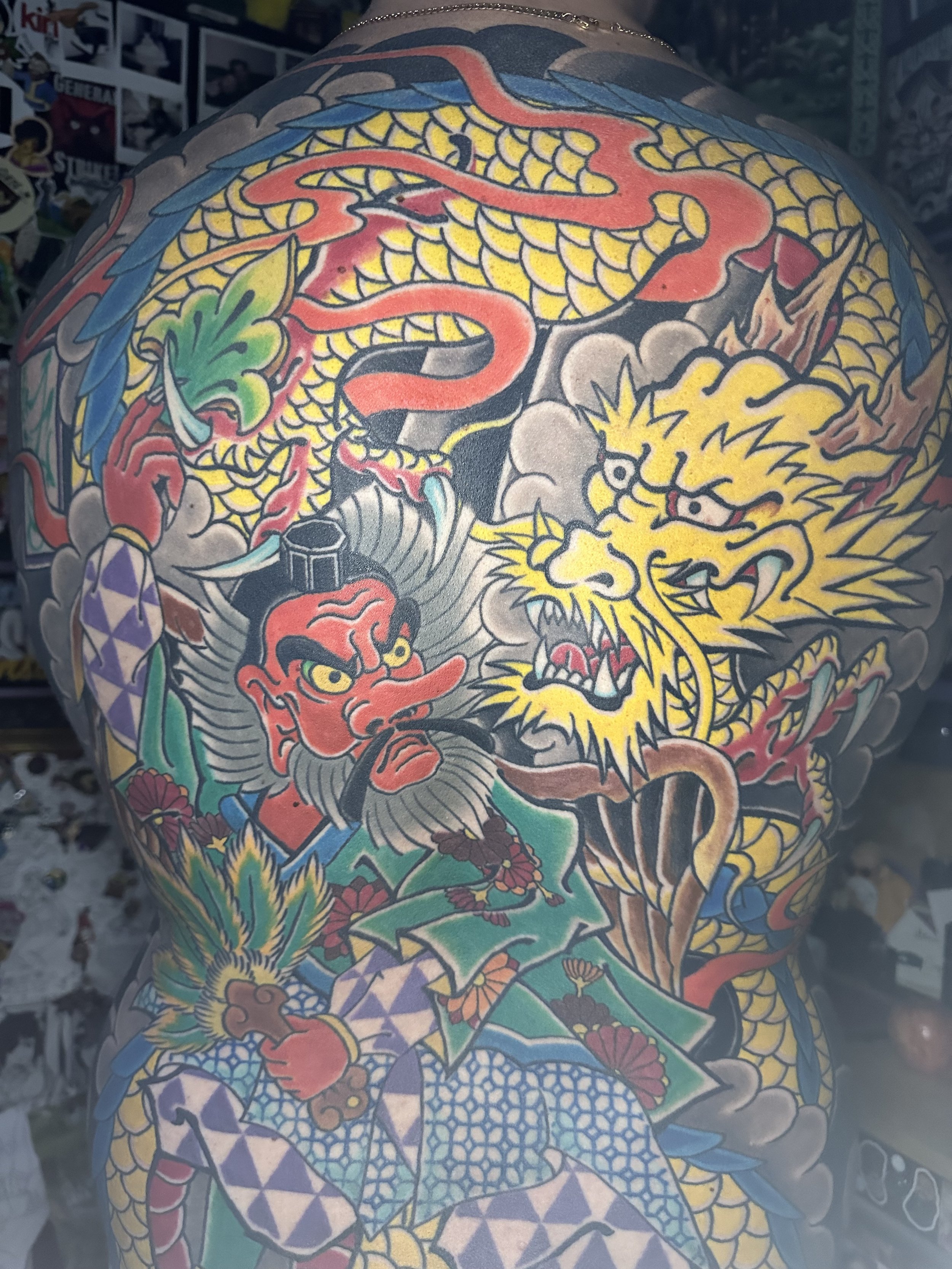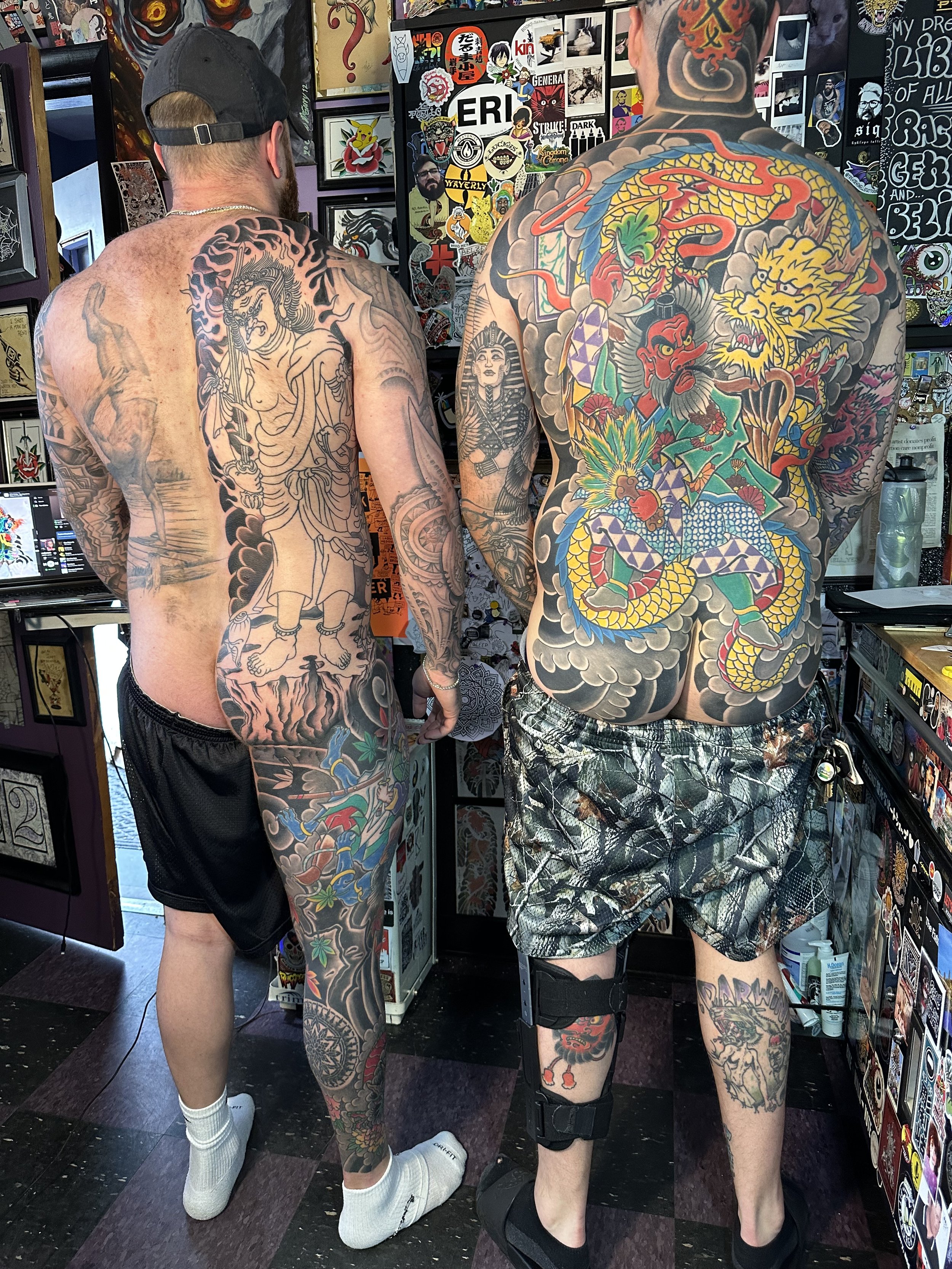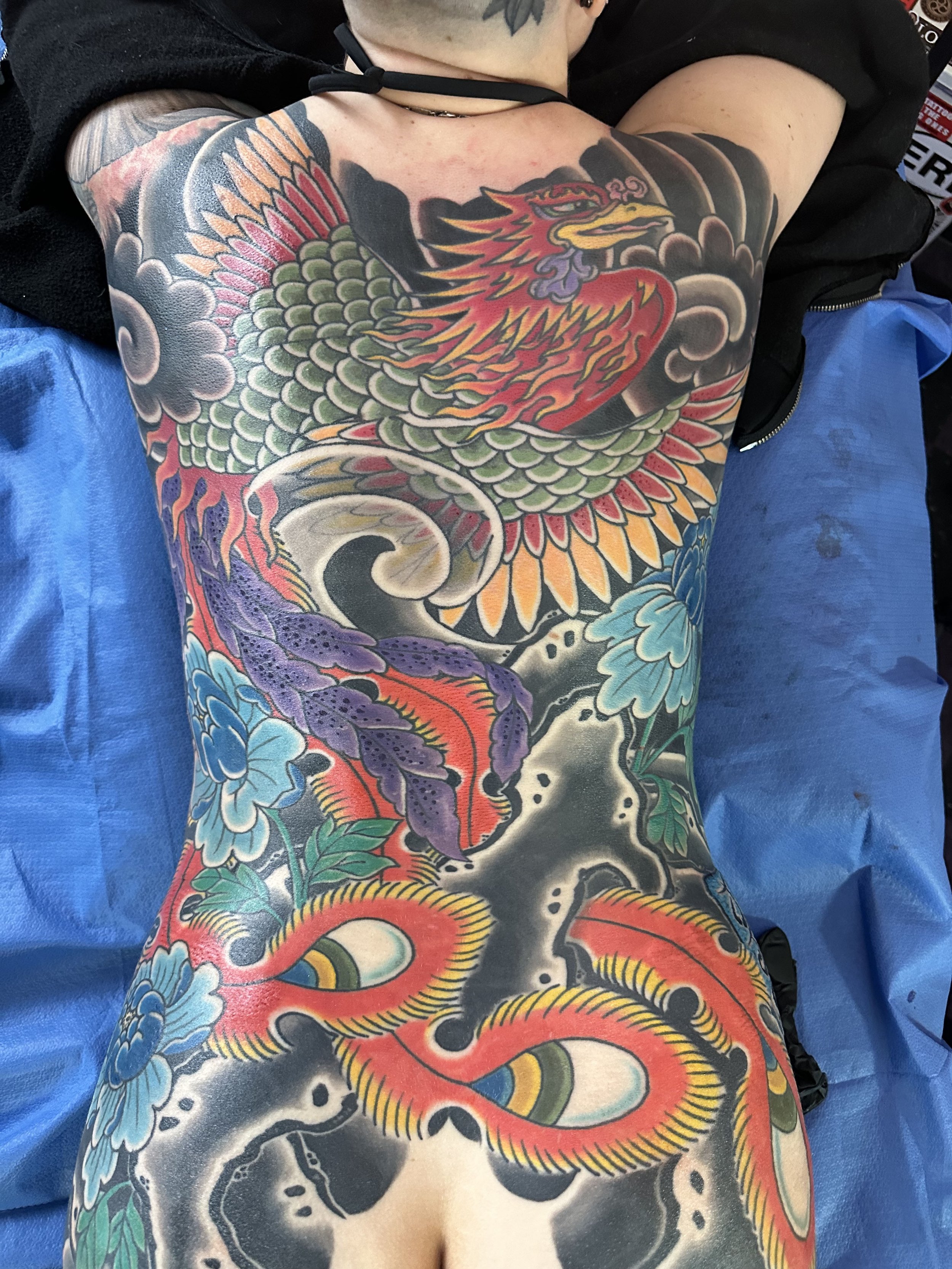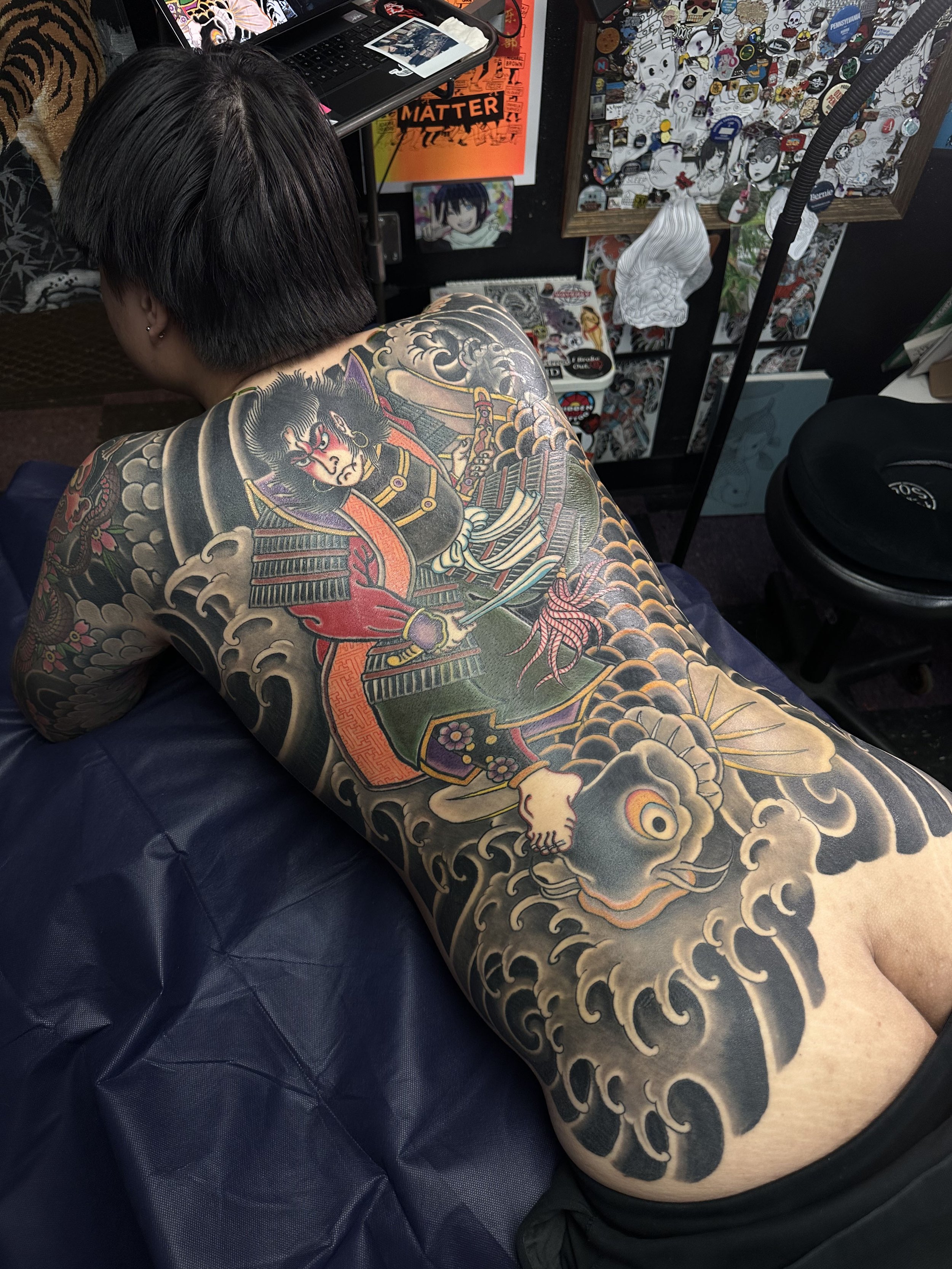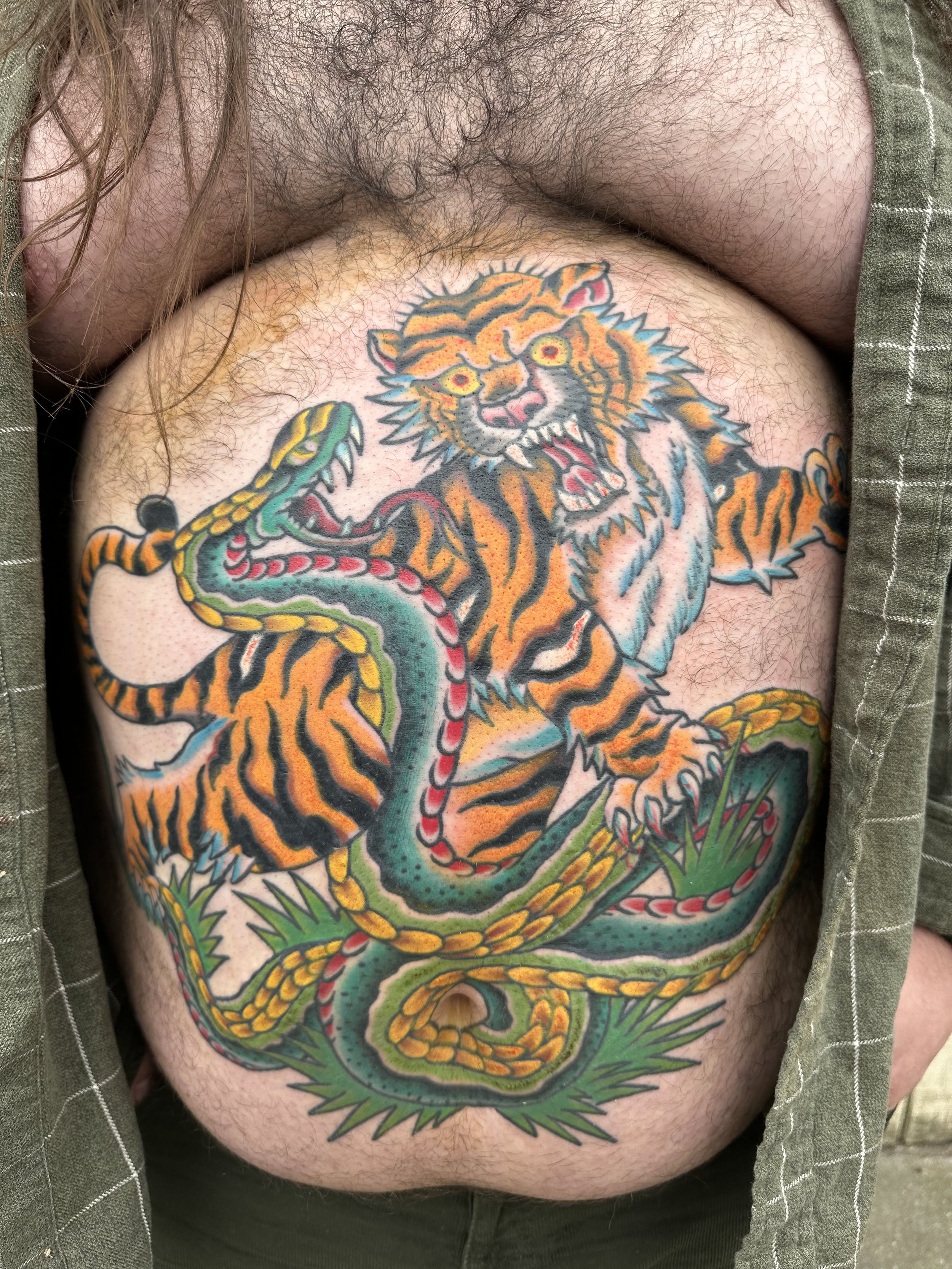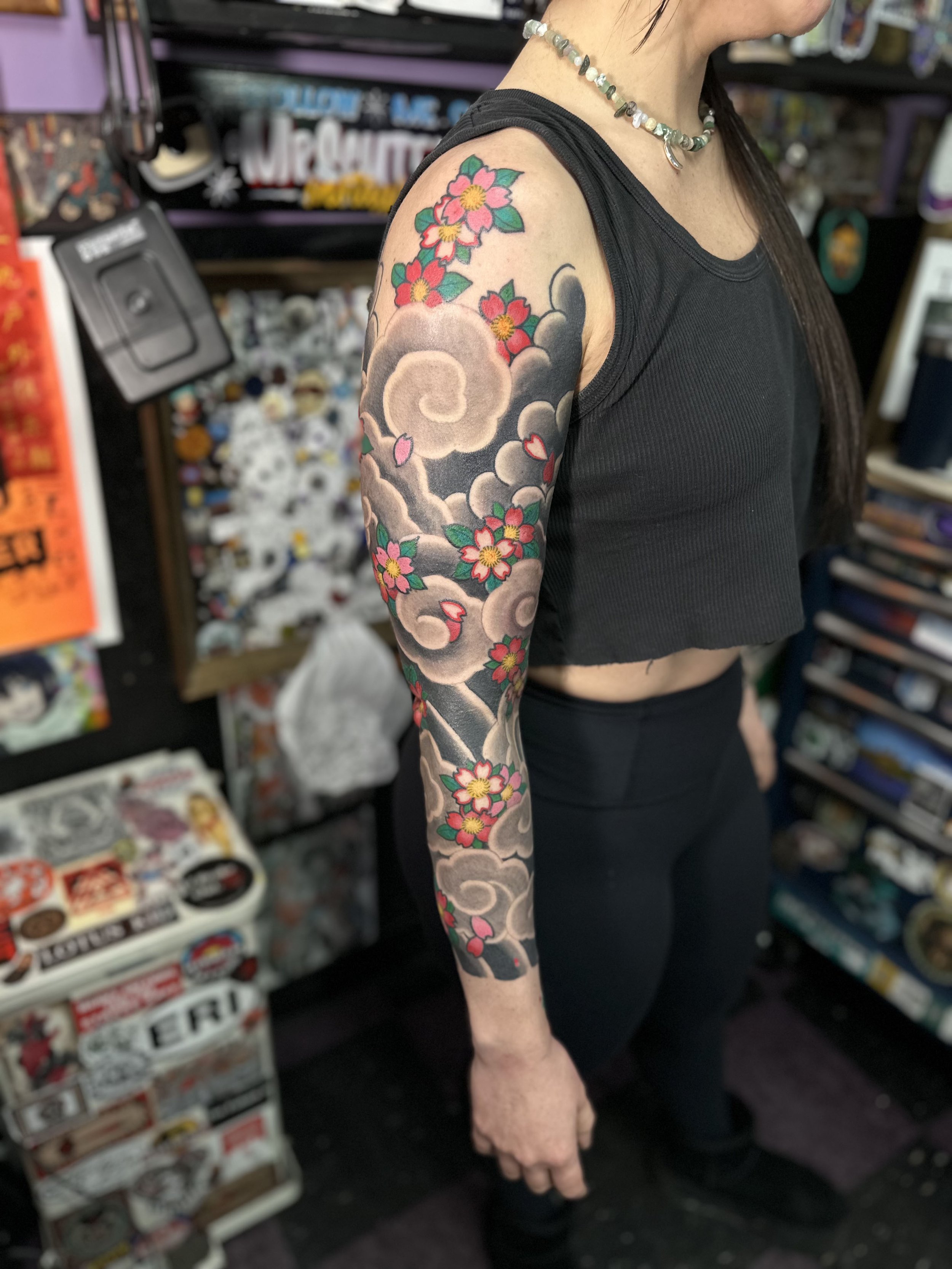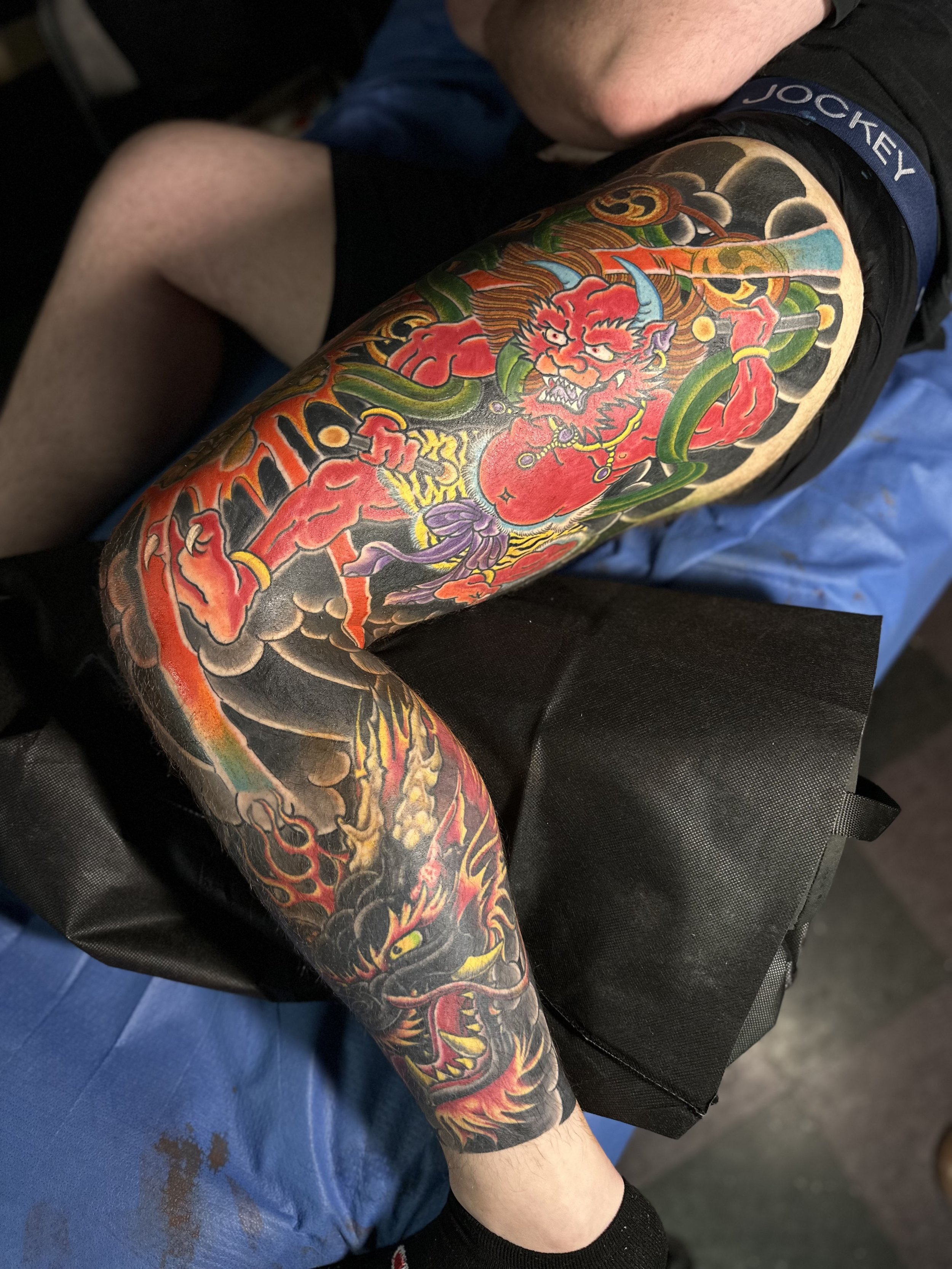
Small introduction to large-scale (Japanese) tattoo work
HORIMONO
Life provides many avenues for expression and creativity to deepen our understanding of ourselves and the world around us. Tattooing provides a holistic opportunity to deepen the relationship with our physical body by actively going through the challenging process.
By selecting certain imagery or symbols for aesthetics, protection, remembrance, or curiosity, this practice brings together the craftsperson and wearer so they can collaborate.
Though there are many styles out there, I believe that Japanese style and Tribal designs hold the strongest in design, fluidity, and overall aesthetic. They do not depend on trends, but rather the foundation and structure of centuries of handcrafted designs and decisions.
I practice these techniques to further my love and passion for the history, language, artwork, customs, and craft of tattooing so that it may benefit those who trust me with the process.
The tradition of full-body tattooing in Japan has a long history dating back to the early 1800s. The recognizable motifs we see today have their origins in the Edo period between 1603 and 1867, while some date back even further. Even then tattoos faced mixed public opinions. Eventually, both tattooing and publicly displaying tattoos became banned in Japan until the repeal of this ban in 1948. However, tattoos still carry something of a social stigma, even in the face of it’s widespread acceptance and understanding.
Japanese tattoos offer something different from other traditional styles. They are meant to be hidden in public, revealed only when the wearer chooses. Providing a choice for the wearer, their own autonomy. Full-body designs cover most of the skin with cohesive imagery, usually from folklore or classical narratives, to create a sense of unity and balance. It is dependent upon a story; which is dependent upon the wearer. There are classic stories that can be personally inspired like, dragons, tigers, phoenixes, snakes, flowers, and other symbols are common. They are always paired with life’s greatest rhythms: water, wind, fire, and earth. The combination of this type of full-body work is called horimono. It relies on dark backgrounds contrasted with bold colors in the foreground. The most skilled artists have studied for years and understand the cultural background of these tattoos and how they still apply to our modern society today.
Ukiyo-e, or “pictures of the floating world”, express this sought-after artistic blend by showcasing images that represent a snapshot of this earthly world: our planet and it’s nature, our wishes and desires, our fears, and our dreams.
In 1827, an incredible ukiyo-e artist, Utagawa Kuniyoshi published the book Suikoden, which offered illustrations of 108 unlikely heroes who adorned full body tattoos. The stories told of commoners who did great deeds for society, who sought more for their community and balance in the world. The stories, characters, and prints became extremely popular and inspired people to identify with them and subsequently wear them on their bodies through tebori.
Another avenue of expression that inspired modern tattooing is that of the avant-garde theater of Kabuki. Where tales of books, like Suikoden, could be tender, gruesome, somber, terrifying, and exciting to watch. Their themes mixed between human emotions and morality.
